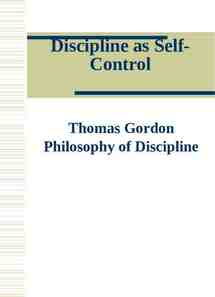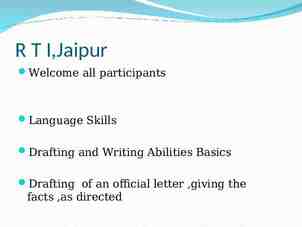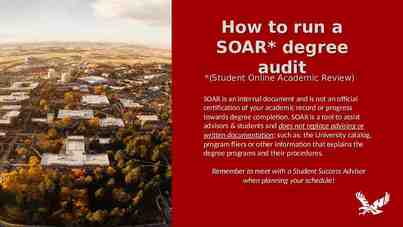Epidemiology of Natural Disasters in Asia-Oceania Prof. Dr. Jan
25 Slides1.90 MB

Epidemiology of Natural Disasters in Asia-Oceania Prof. Dr. Jan D. Reinhardt1,2 Institute for Disaster Management and Reconstruction of Sichuan University and Hong Kong Polytechnic University, Chengdu, China 2 Chair-elect, Committe for Rehabilitation Disaster Relief of the International Society of Physical and Rehabilitation Medicine, Geneva, Switzerland 1

Purpose Participants understand the impact of natural disasters on health and functioning and its distribution in the population with a particular focus on Asia-Oceania (AO)

Overview Epidemiology Natural disasters Health consequences – Fatalities – Casualities – Mental health – Communicable disease – Disability Challenges & solutions for disaster epi Conclusion

Epidemiology «The study of the distribution and determinants of health-related states or events in specified populations and the application of this study to the control of health problems» (Porta 2008) – Describes extent of problem – Examines etiology and risk factors – Studies history and prognosis – Evaluates therapeutic measures – Provides basis for health policy development

Natural Disasters Natural disasters are sudden ecological disruptions or threats that exceed the adjustment capacity of the affected community and require external assistance (Lechat, 1979; WHO, 1980).

Natural disaster - Types Type Geological Examples Earthquake, tsunami, volcanic erruption Metereological Biological Hurricane, heat wave, flood Epidemic

„Natural“ disaster revisited Natural disaster risk f(hazard, exposure, vulnerability) Hazard: Type, intensity Exposure: people, infrastructure Vulnerability (comunity, individual): „capacity to anticipate, cope with, resist, and recover from the impact of a natural hazard” (Wisner et al. 2004) Disaster mostly strikes low-resource regions! Disaster mostly affects socially disadvantaged groups!

Occurence Average occurrence in AO per annum (2000-2015): 172 (95% CI 157-187) – 42.2 % of global occurrence/year Flood Storm Earthquake Landslide Epidemic 0 10 20 30 40 50 60 70 80 Average annual occurence of natural disasters in AO by disaster type (2000-2015); error bars represent 95 % Confidence Intervals

Occurence and impact Average occurrence in AO per annum (2000-2015): 172 (95% CI 157-187) – 42.2 % of global occurrence/year Average affected population in AO per annum (2000-2015): 168 mio (95% CI 93-243 mio) – 87.5 % of global population affected/year Over 1.8 mio left homeless on average/year – About 83 % of global population left homeless due to nat. disaster/year

Occurence and impact Loss of – Life and limbs – Psychosocial well-being – Housing – Economic infrastructure – Public health infrastructure – Communication and transportation networks – Medical facilities – Healthcare workers, as displaced, injured or killed

Health consequences Fatalities Casualities Mental health issues Communicable disease Disability

Fatalities From 2000 to 2015 over 1.27 million people died due to natural disasters worldwide Over half of those in AO (760,000 deaths) 15813 11093 109221043 61644 175331 483717 Earthquake Storm Flood Extreme temperature Epidemic Landslide Others Numbers of death due to natural disaster by disaster type in AO from 2000-2015 Data extracted from CRED, EMDAT

Fatalities Direct causes , e.g. – trauma due to building collapse (earthquakes) – flying debris (hurricanes) – drowning (floods, hurricanes) Indirect causes, e.g. – motor vehicle accidents (Doocy et al., 2013) Children, elderly, people with disability are exposed to increased risk of death (Doocy et al., 2013, Reinhardt et al. 2012)

Casualities Due to blunt trauma, crush injuries, near drowning, and psychological sequelae Number of injuries typically exceeds fatalities Trend of increased odds of being injured as opposed to death over time 6 Medan injury to deaths ratios from 1975 to 2014 for AO; error bars indicate interquartiles. P (Cuzick’s test for trend across ordered groups) 0.001. Data extracted from CRED, EMDAT 5 4 3 2 1 0 1975-1984 1985-1994 1995-2004 2005-2014

Casualities Over 4.3 mio injured people reported globally due to natural disaster from 2000-2015 Of those around 42% (1.8 mio) in AO 124688 115877 238680 1035897 284121 Earthquake Storm Flood Extreme temperature Epidemic Numbers of injured people due to natural disaster by disaster type in AO from 2000-2015. Data extracted from CRED, EMDAT

Communicable disease Communicable disease resulting from dead bodies is largely a myth (Watson et al. 2007) Risk of infectious disease is, however increased due to – population displacement with resulting overcrowding – low levels of immunity to vaccine-preventable diseases – disrupted or nonexistent public health services – lack of clean water – inadequate nutrition – poor sanitation Reliable epi data largely lacking

Mental Health High incidence of post-traumatic stress disorder and other mental conditions (e.g. anxiety, depression) Psychological distress from – adverse health consequences (e.g. disability), – loss of home and livelihood, – death of family and friends – adverse experiences during event (e.g. watching people die)

Mental Health Witnessed death disability Selection of predictors for PTSD (PCLC) in 459 victims from Wenchuan EQ; Least Angle Regression (Ni 2013)

Disability Disasters cause sudden onset of health conditions with longterm medical and functional consequences – spinal cord injuries (SCI), – traumatic brain injuries (TBI), – amputations, – long-bone fractures, – peripheral nerve injuries, – near drowning In addition, pre-existing chronic health problems and disabilities may be exacerbated Lack of good epi data on incidence/prevalence of conditions and disability

Disability Moderate evidence for effectiveness of rehab measures Rehab groups (red, green) show faster and greater improvement than controls (blue). Data from 591 victims of Wenchuan EQ

Epi of disability in natural disaster: Challenges & possible solutions Lack of representative data on incidence/prevalence of chronic conditions and disability Possible solutions: – Large random samples from affected populations (general population, hospitalized population) – Pre-approval and funding of research protocols to be activated in case that disaster strikes – Long-term research follow up – Short and easy to administer measurement scales for functioning

Epi of disability in natural disaster: Challenges & possible solutions Lack of knowledge on specifics of disability in disaster struck populations Possible solutions: – Comparisons of disaster victims with people with similar health conditions due to different etiology – Matched pairs method based on hospital data (e.g. rehab departments) – Regular disability surveys in general population

Epi of disability in natural disaster: Challenges & possible solutions Lack of knowledge on which particular rehab measures work best in disaster victims Possible solutions: – Pre-funded and approved RCTs – Systematic and unified documentation of treatments and treatment hours in hospital and pre-hospital situation for cohort studies

Conclusion Natural disasters massively impact human health and cause long-term disability Medical rehabilitation is an important strategy of disaster response Better data for epidemiological research in disasters is needed

Thank you!






